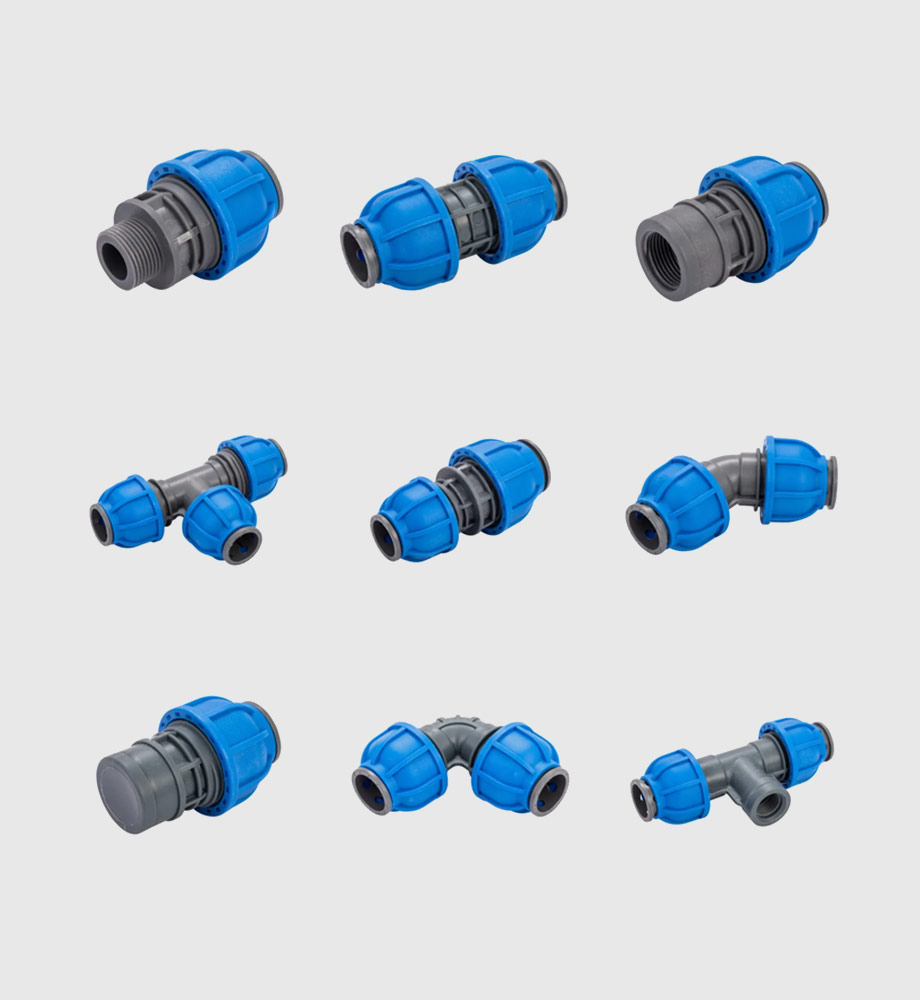Key Features
- Chemical Resistance (PP): Polypropylene is highly inert to most chemicals (organic solvents, acids, alkalis).
- Mechanical Strength (Nylon): Nylon has high tensile and compressive strength, ideal for pressurized fluid systems.
- Low Weight: Easier to install than metal pipes and fittings.
- Versatile Connections: Options include threaded, compression, or flange joints. PP can often be heat-fused.
- Low Moisture Uptake (Nylon): Modern Nylon 12 absorbs very little water, maintaining size and properties.
Benefits
- Longevity: Nonmetallic pipes won’t corrode; they last for decades in harsh chemical environments.
- Safety: Insulative and non-sparking, useful where metal might cause issues.
- Energy Efficiency: Smooth bore reduces friction losses, saving pumping energy.
- Wide Compatibility: PP and nylon do not react with most fluids used in labs, automotive, or manufacturing.
Applications
- Compressed Air Lines: Nylon 12 tubing is standard for clean, dry air distribution in factories.
- Chemical Processing: PP pipe and fittings used for tanks, reactors, and vents handling corrosive fluids.
- Laboratory & Instrumentation: Piping for analytical equipment (fume hoods, waste lines) due to chemical inertness.
- Food & Beverage: Food-grade PP piping is used for beverage and dairy processing (heat-weldable to avoid leaks).
- Marine & Aquaculture: Saltwater and brine handling where corrosion resistance is critical.
Technical Specifications
- Materials: Nylon 11 or 12 (high purity grades), Polypropylene (homopolymer or copolymer, often glass-reinforced for strength).
- Pressure Rating: Up to ~150 psi at 20°C for Nylon; PP typically rated PN10–PN16 (10–16 bar at 20°C).
- Temperature Range: Nylon ~–40°C to +80°C; PP ~0°C to +100°C (copolymer grades higher).
- Standards: Nylon tubing often to ISO 7628 (fluid power tubing); PP piping to ISO 15874 or ASTM D4101.
Unique Selling Points (USPs)
- Non-Corrosive: Ideal replacement for metal in corrosive atmospheres.
- Automated Assembly: Many fittings allow fast push-fit or heat-fusion joins.
- Safety Rated: Non-toxic and often FDA/NSF certified for water contact.

